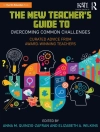How do the Kara, a small population residing on the eastern bank of the Omo River in southern Ethiopia, manage to be neither annexed nor exterminated by any of the larger groups that surround them? Through the theoretical lens of rhetoric, this book offers an interactionalist analysis of how the Kara negotiate ethnic and non-ethnic differences among themselves, the relations with their various neighbors, and eventually their integration in the Ethiopian state. The model of the “Wheel of Autonomy” captures the interplay of distinction, agency and autonomy that drives these dynamics and offers an innovative perspective on social relations.
Innehållsförteckning
List of Illustrations
Acknowledgments
Introduction: How Do They Do It?
Chapter 1. A Rhetorical Approach to Groups and Ethnicity
Chapter 2. Categories of Being Kara
Chapter 3. Ethnicity within Kara: The Demotion of the Bogudo
Chapter 4. The Moguji: All That Is Not Kara
Chapter 5. The Schism and Other Predicaments of the Moguji
Chapter 6. The Regional Other in the Cultural Neighbourhood
Chapter 7. South Omo in Kara Terms
Chapter 8. The Cleverness of the Kara
Chapter 9. Seeing like a Tribe
Conclusion
Glossary of Non-English Terms
Glossary of Places and People
References
Index
Om författaren
Felix Girke is a social/cultural anthropologist and a post-doctoral researcher at the University of Konstanz, Germany. His publications include the edited volumes Ethiopian Images of Self and Other (UVHW, 2014) and The Rhetorical Emergence of Culture (Berghahn Books, 2011). He currently studies the politics of cultural heritage in Myanmar.












